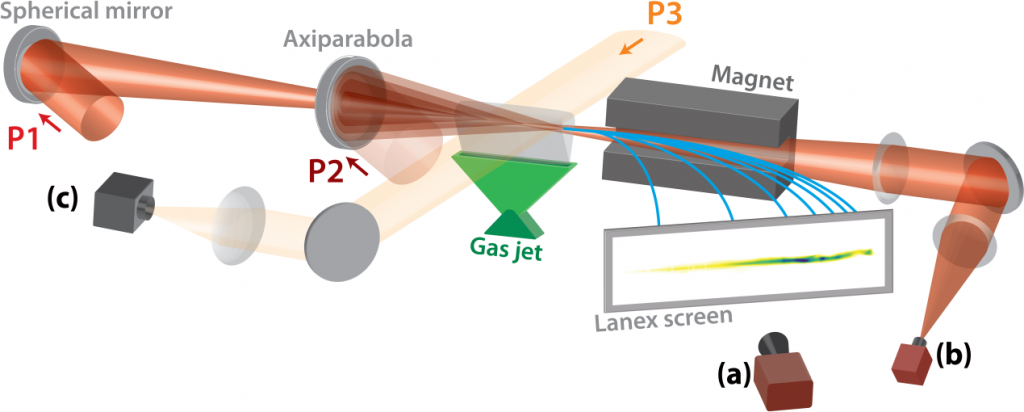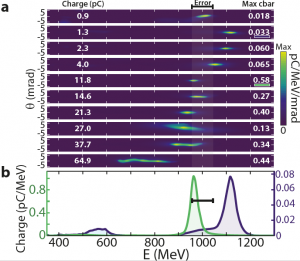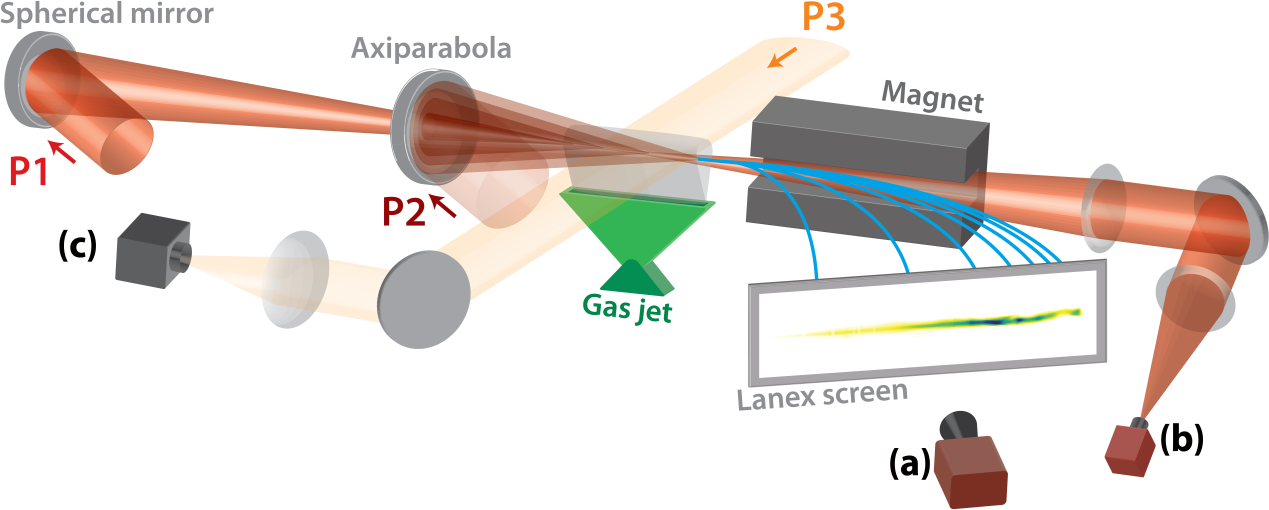High-quality GeV electron beams from an all-optical plasma waveguide
Laser-plasma accelerators produce and operate extremely strong electric fields, which may allow challenging the conventional kilometers-long particle accelerators. Despite this promise and after decades of development, this technology still lacks a solution to deliver simultaneously high energy, high stability, and good beam quality.
A team of scientists from LOA’s UPX group and the Weizmann Institute of Science found one such solution based on a laser-generated plasma waveguide in a density-shaped gas target enabling controlled injection of electrons into the accelerating wakefield.

This simple and versatile scheme has allowed production of electron beams at the GeV level, with unprecedented quality and efficiency. Since this accelerator is immune to optical damage, it can be used with arbitrarily high laser energies and repetition rates, opening new avenues for the realization of ultra-compact high-energy accelerators.

This work is published in the article
Archive ouverte HAL.



